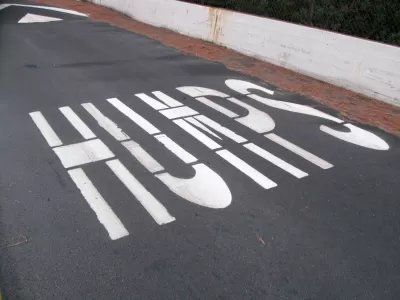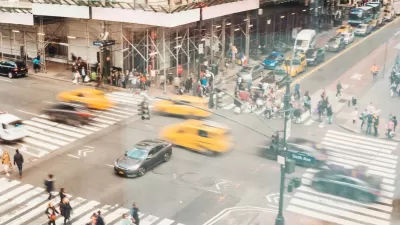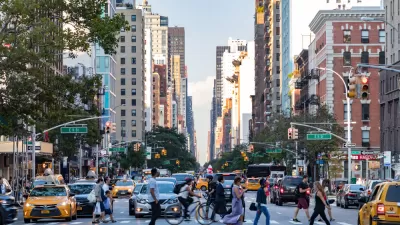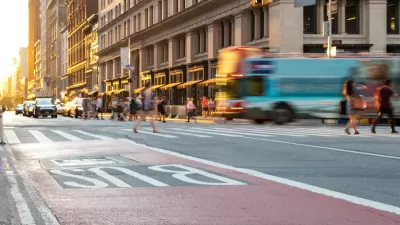The city may not have done enough to actually slow down driving in its nominal slow zones.

Paris, Iceland, and London are among the jurisdictions worldwide to adopt traffic-slowing strategies in the interest of safer streets—much of the time with success. But New York's slow zone program, launched in 2011, is a different story. Researcher Jonas Hagen found that weak implementation of the city's 28 slow zones have led to a failure to reduce traffic injuries.
New York's slow zones feature largely low-impact interventions, Hagen's report notes—like speed bumps, signs, and pavement markings. Other jurisdictions have seen success with more robust measures, as David Meyer writes for Streetsblog:
The London program, which included more physical street design changes, led to a measurable reduction in severe traffic collisions … London added raised crosswalks, raised intersections, curb extensions, pedestrian refuges, traffic diverters, mini-roundabouts, and other traffic-calming measures as part of its 20 mph zone program. And these interventions are installed at five times the rate per mile of street as New York’s speed humps.
FULL STORY: London’s Slow Zones Save Lives and New York’s Don’t. Here’s Why.

Alabama: Trump Terminates Settlements for Black Communities Harmed By Raw Sewage
Trump deemed the landmark civil rights agreement “illegal DEI and environmental justice policy.”

Planetizen Federal Action Tracker
A weekly monitor of how Trump’s orders and actions are impacting planners and planning in America.

The 120 Year Old Tiny Home Villages That Sheltered San Francisco’s Earthquake Refugees
More than a century ago, San Francisco mobilized to house thousands of residents displaced by the 1906 earthquake. Could their strategy offer a model for the present?

Opinion: California’s SB 79 Would Improve Housing Affordability and Transit Access
A proposed bill would legalize transit-oriented development statewide.

Record Temperatures Prompt Push for Environmental Justice Bills
Nevada legislators are proposing laws that would mandate heat mitigation measures to protect residents from the impacts of extreme heat.

Downtown Pittsburgh Set to Gain 1,300 New Housing Units
Pittsburgh’s office buildings, many of which date back to the early 20th century, are prime candidates for conversion to housing.
Urban Design for Planners 1: Software Tools
This six-course series explores essential urban design concepts using open source software and equips planners with the tools they need to participate fully in the urban design process.
Planning for Universal Design
Learn the tools for implementing Universal Design in planning regulations.
Clanton & Associates, Inc.
Jessamine County Fiscal Court
Institute for Housing and Urban Development Studies (IHS)
City of Grandview
Harvard GSD Executive Education
Toledo-Lucas County Plan Commissions
Salt Lake City
NYU Wagner Graduate School of Public Service





























